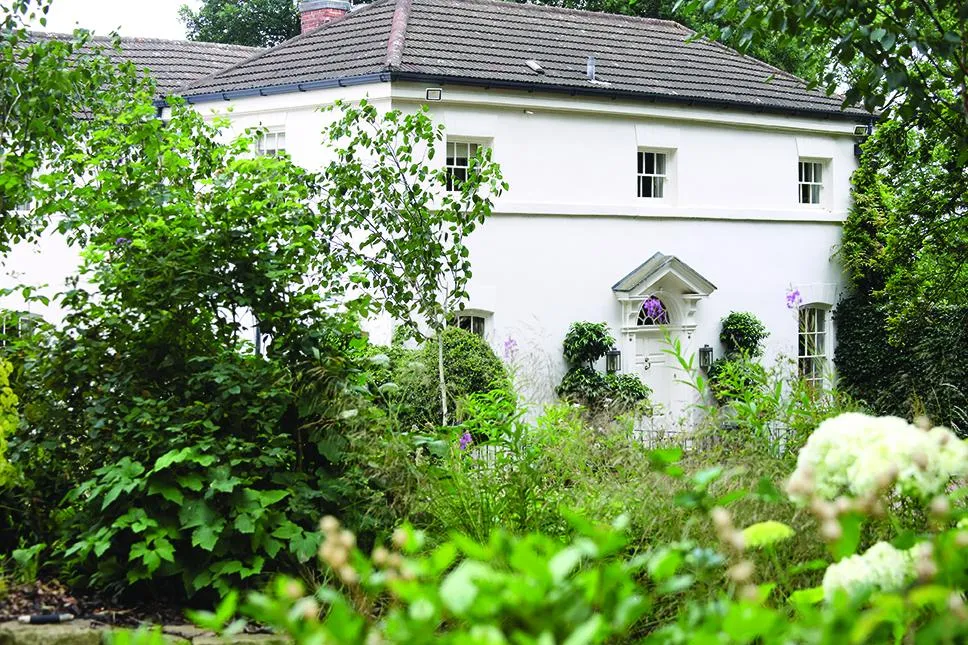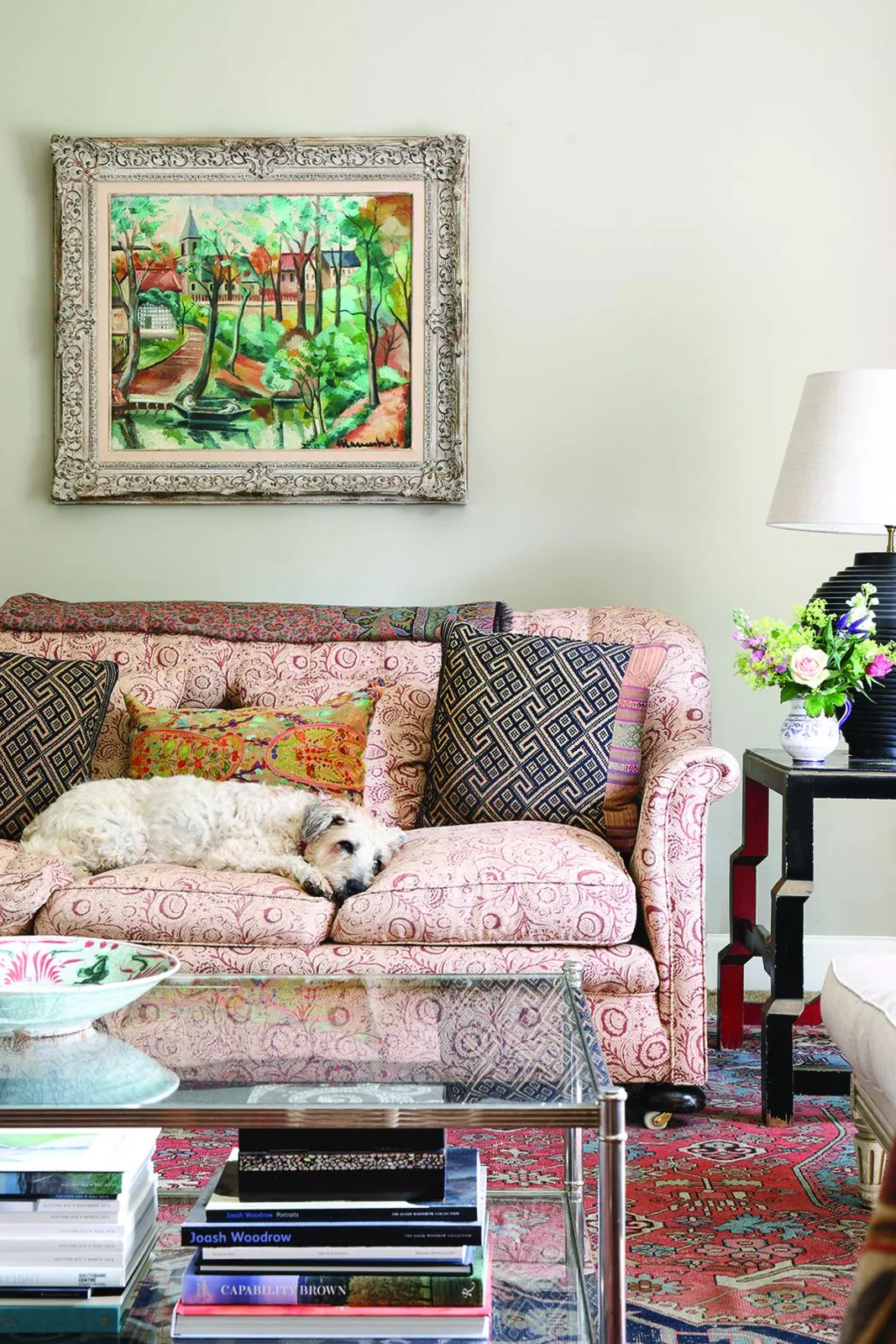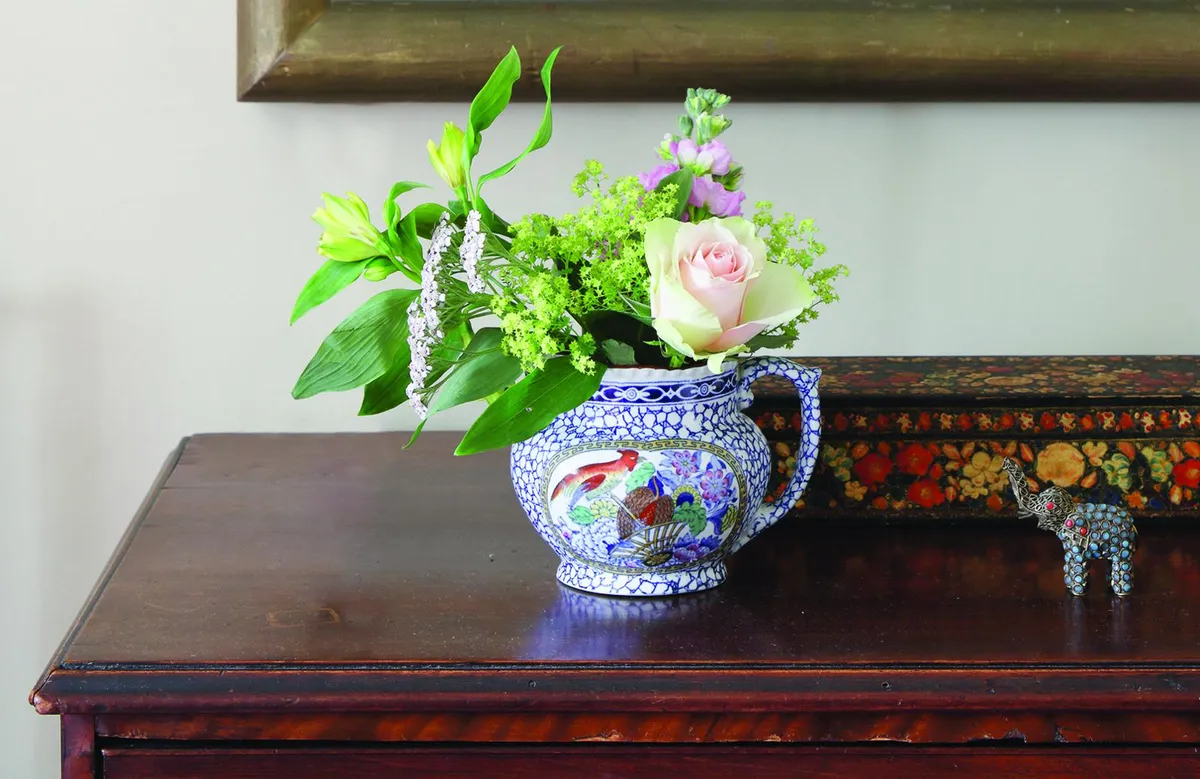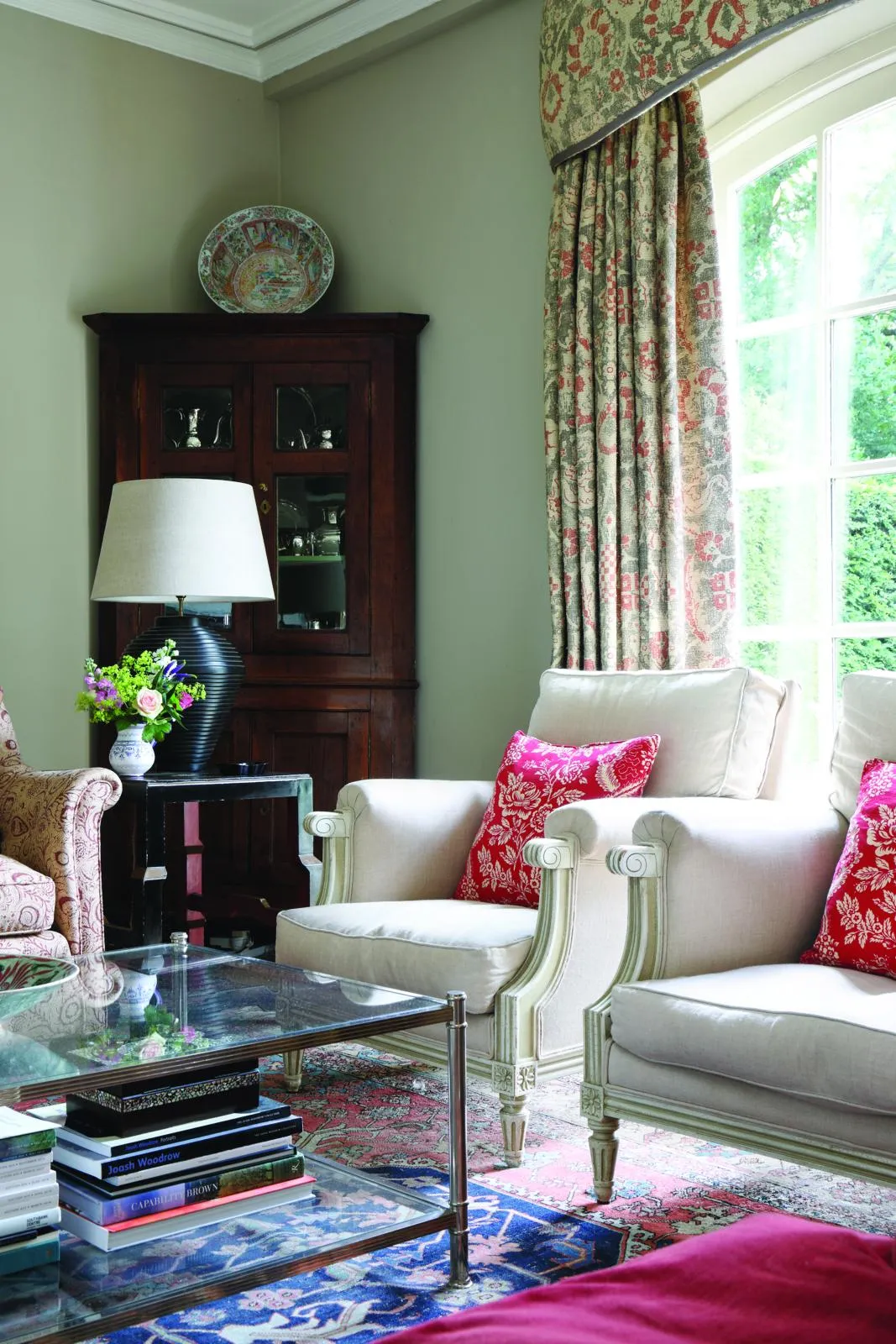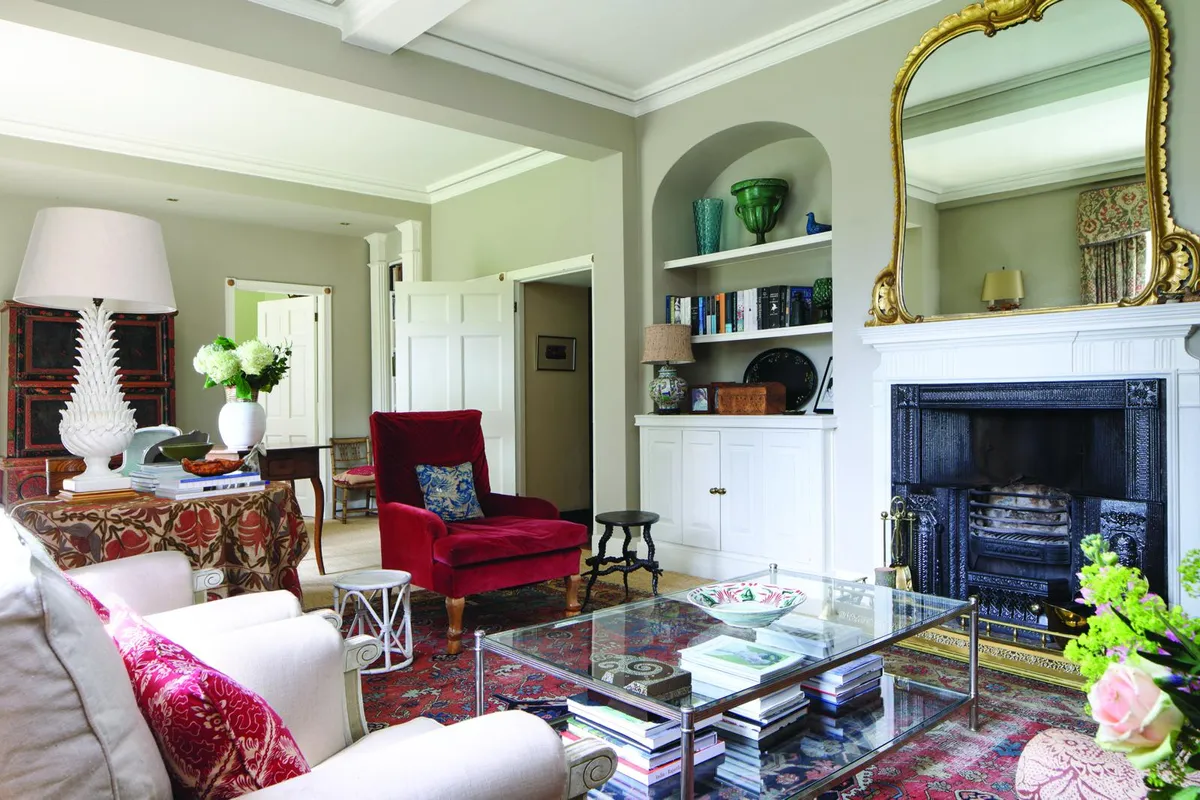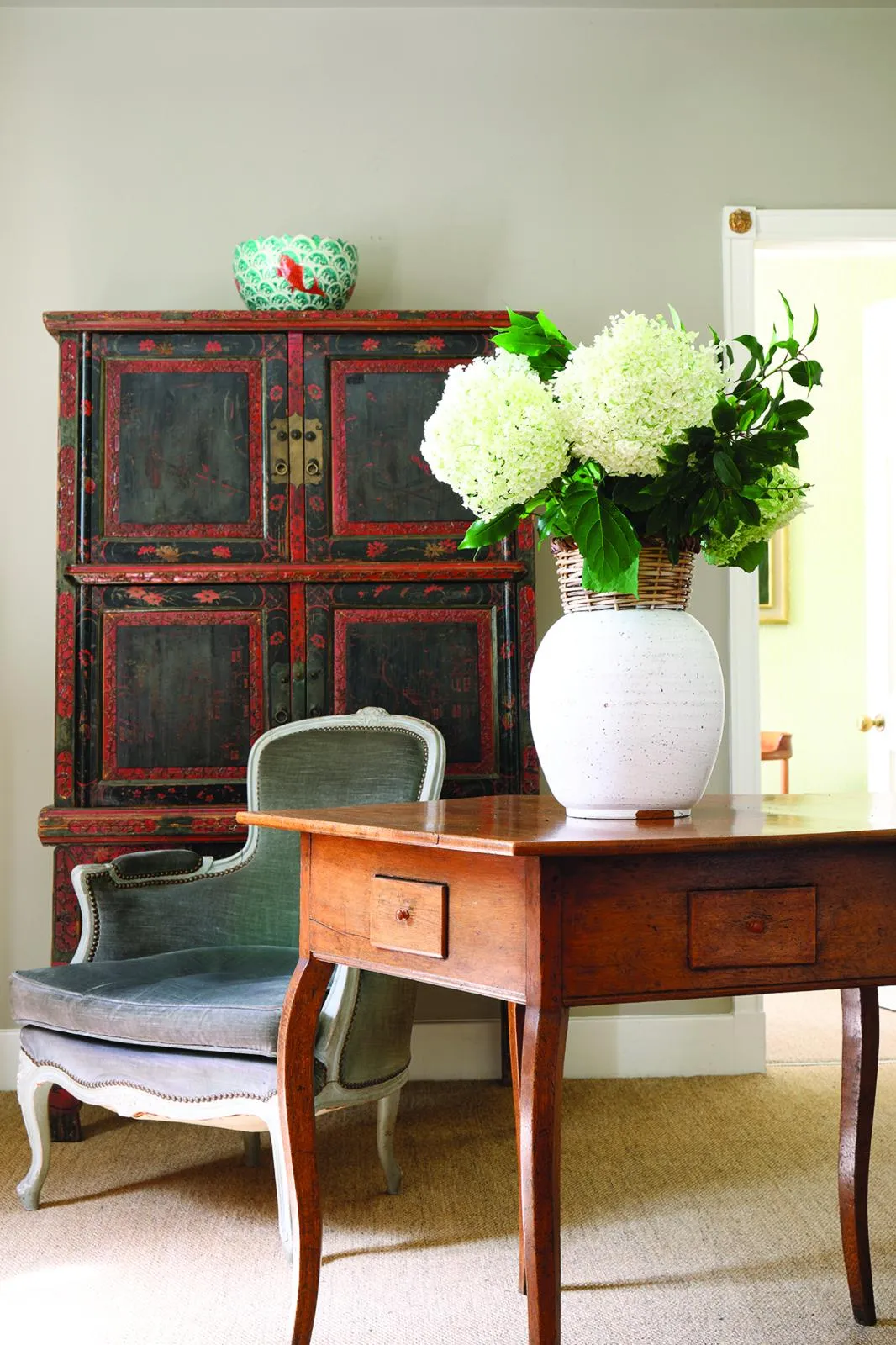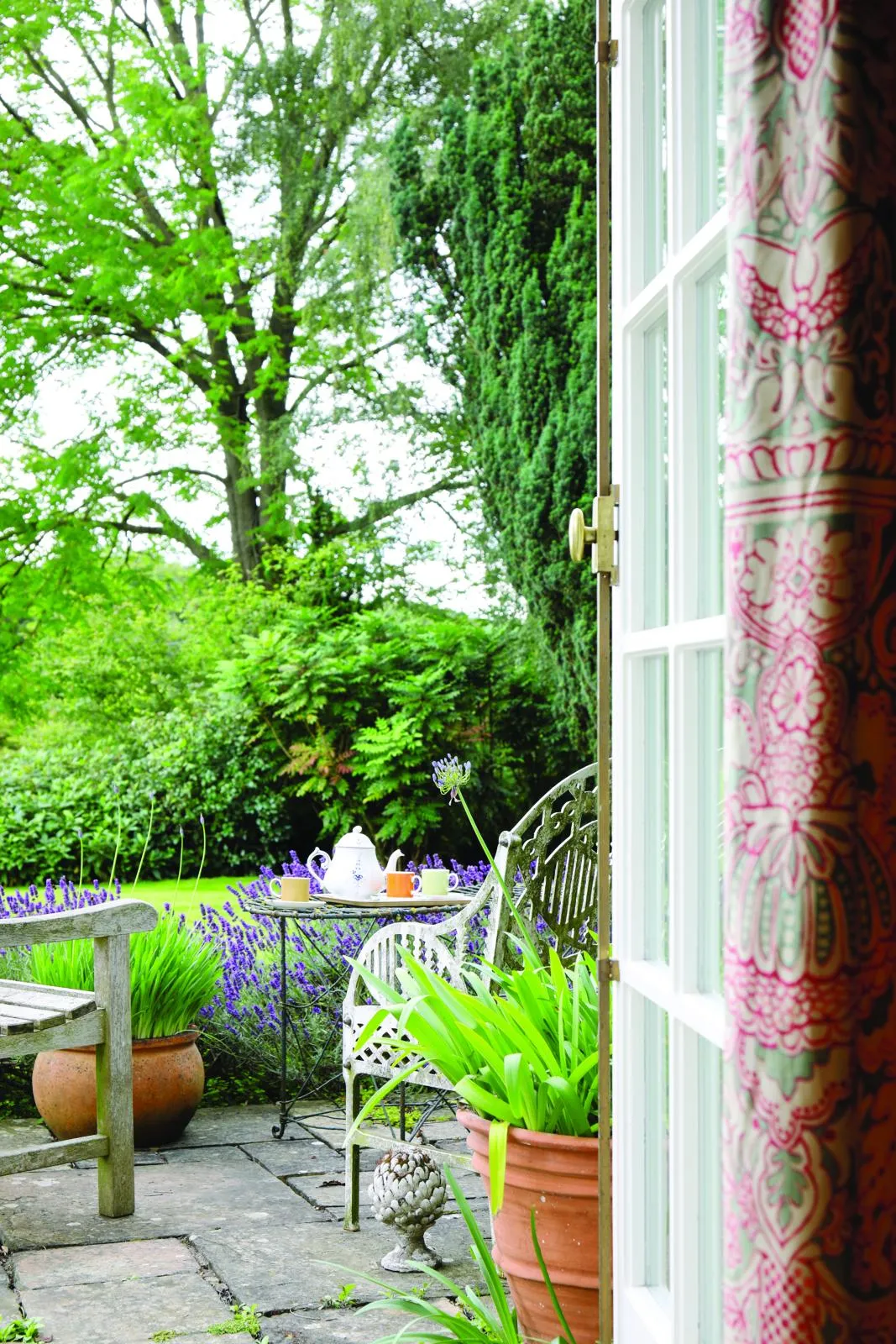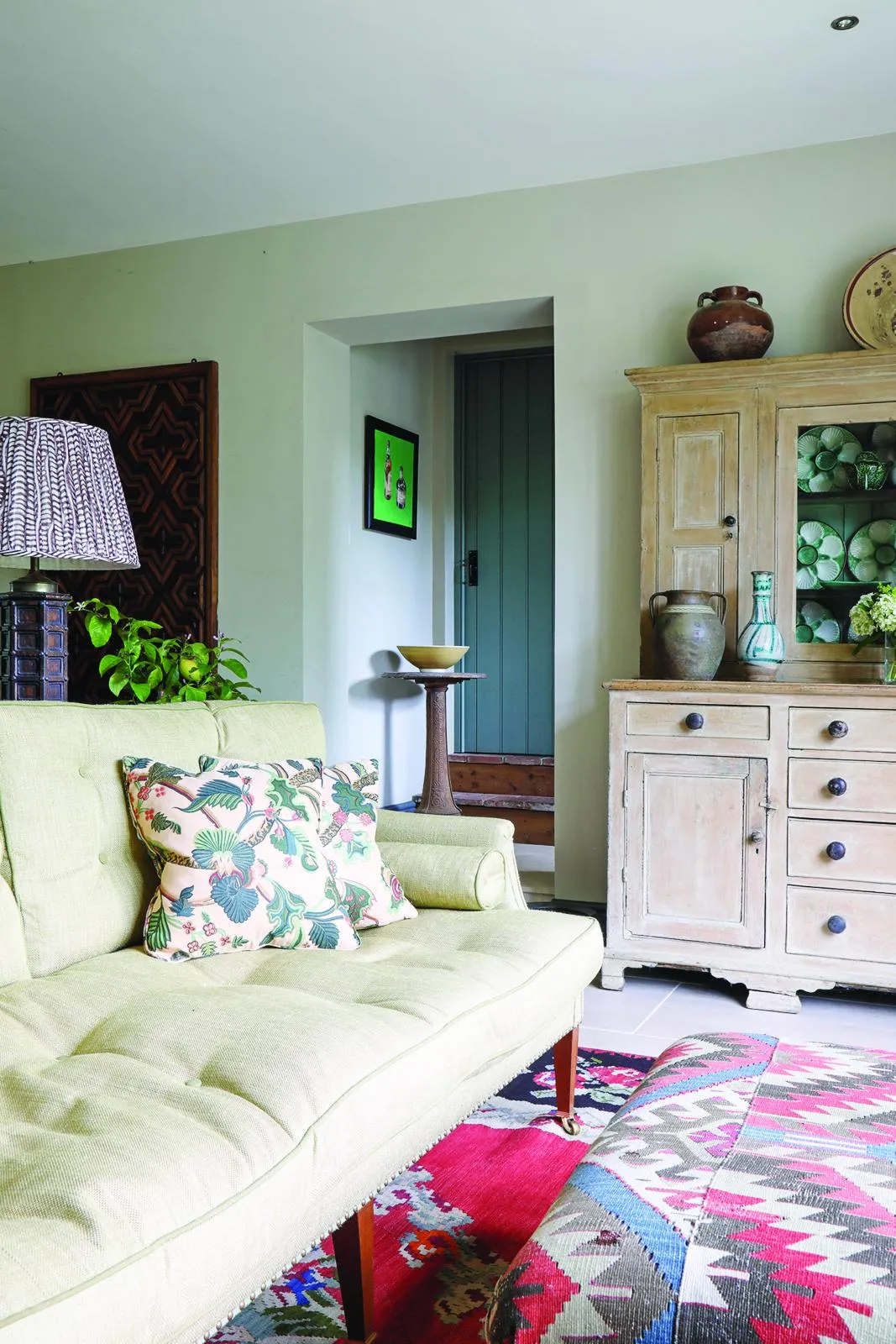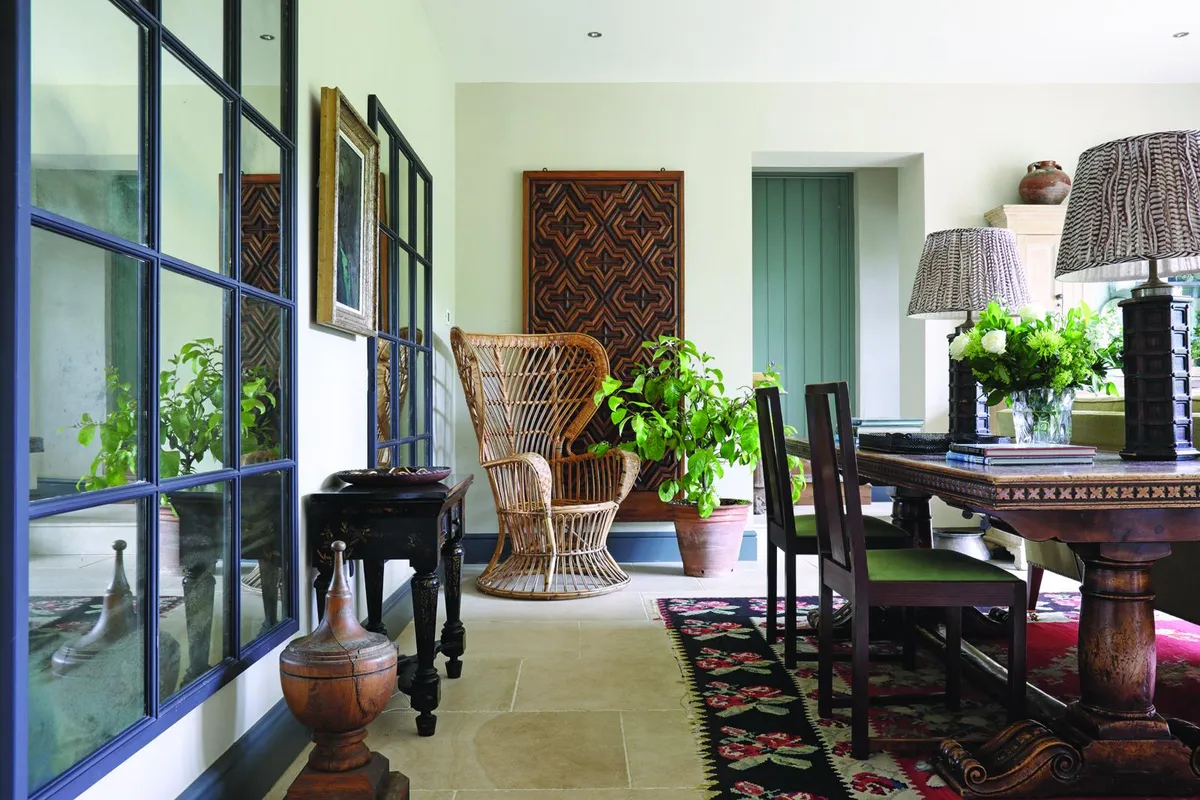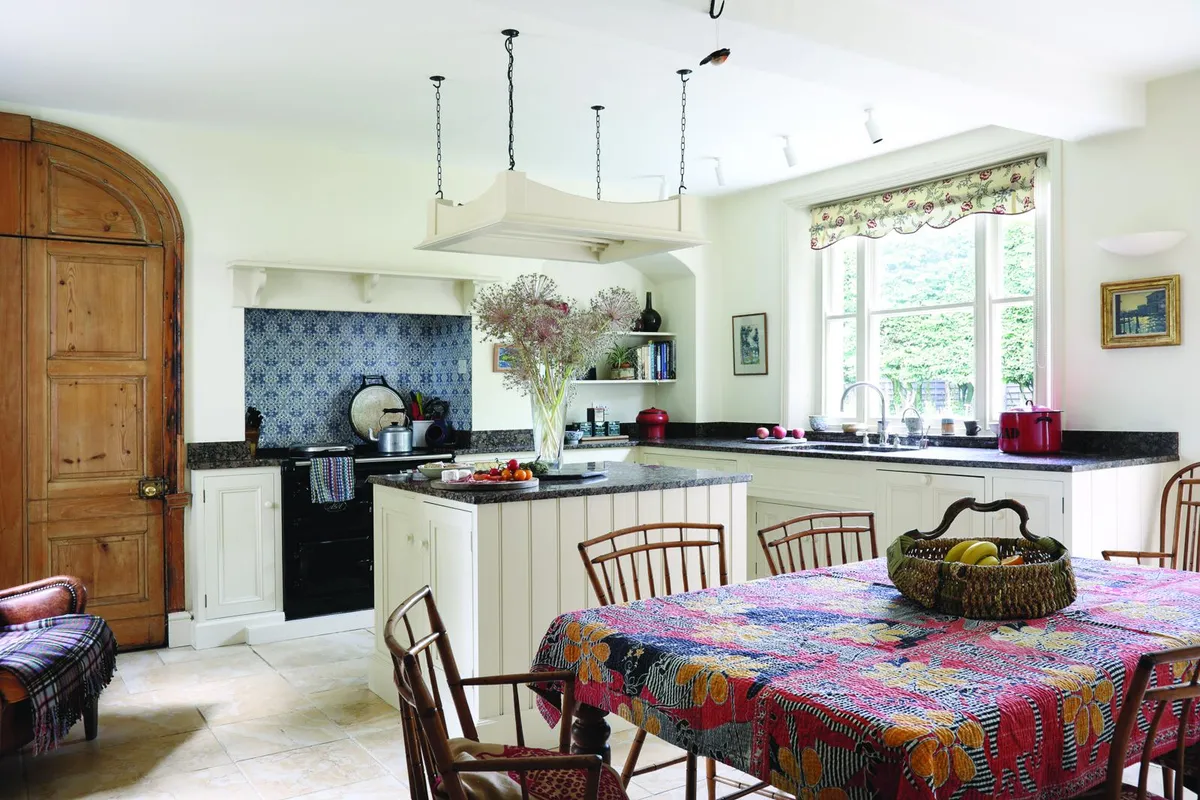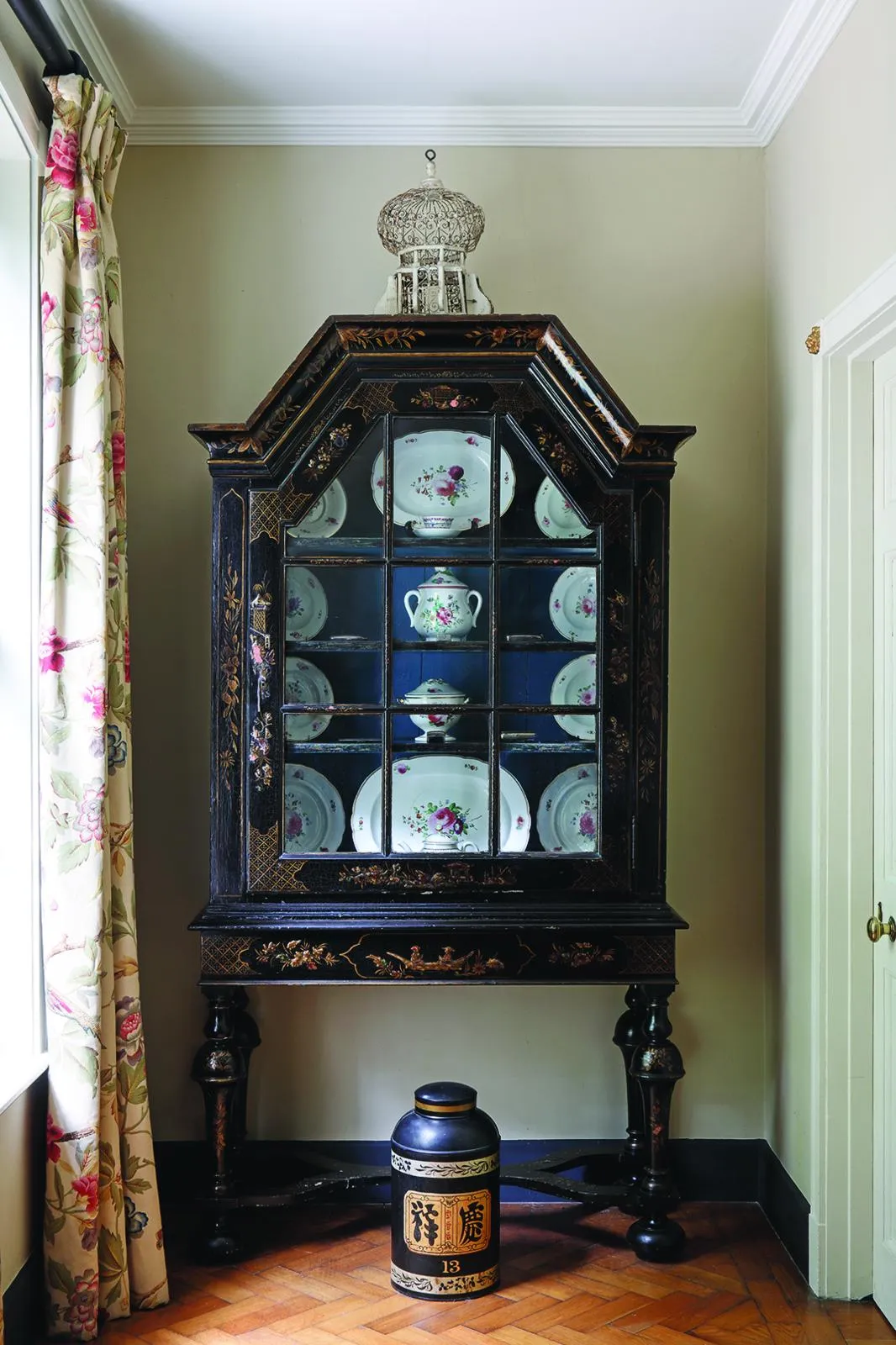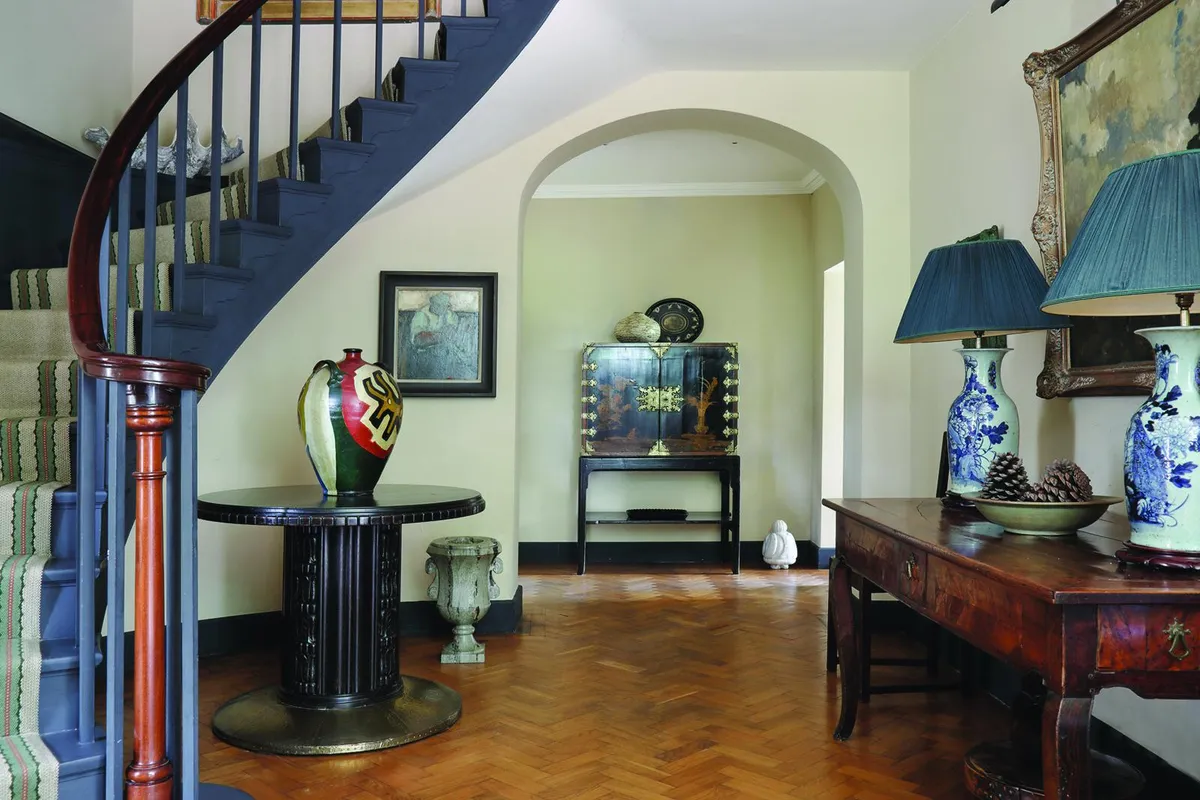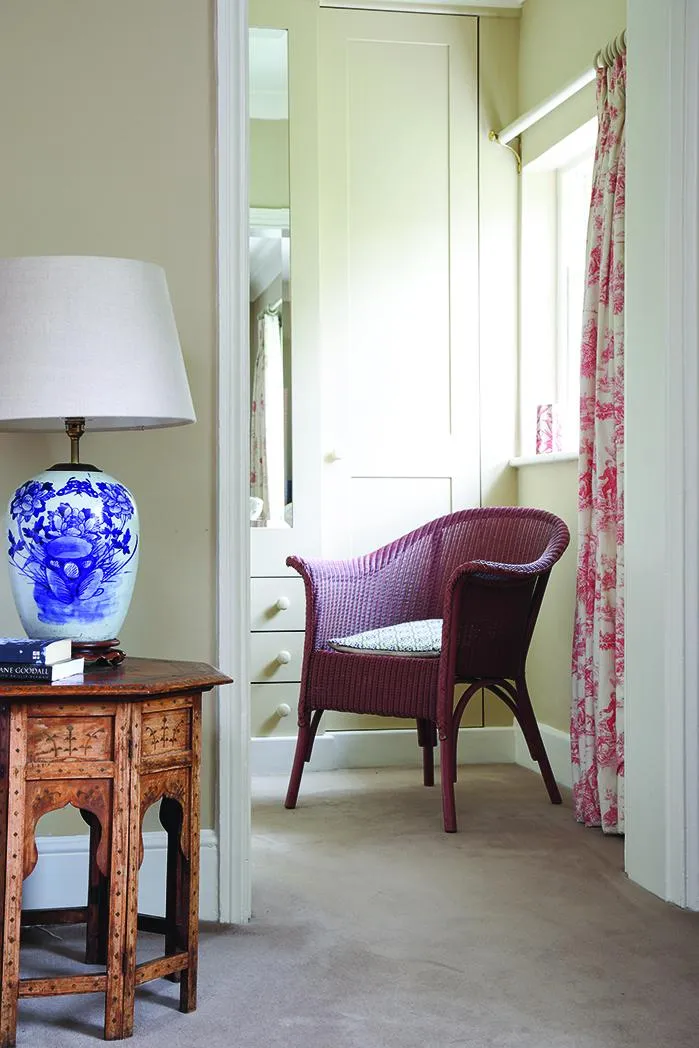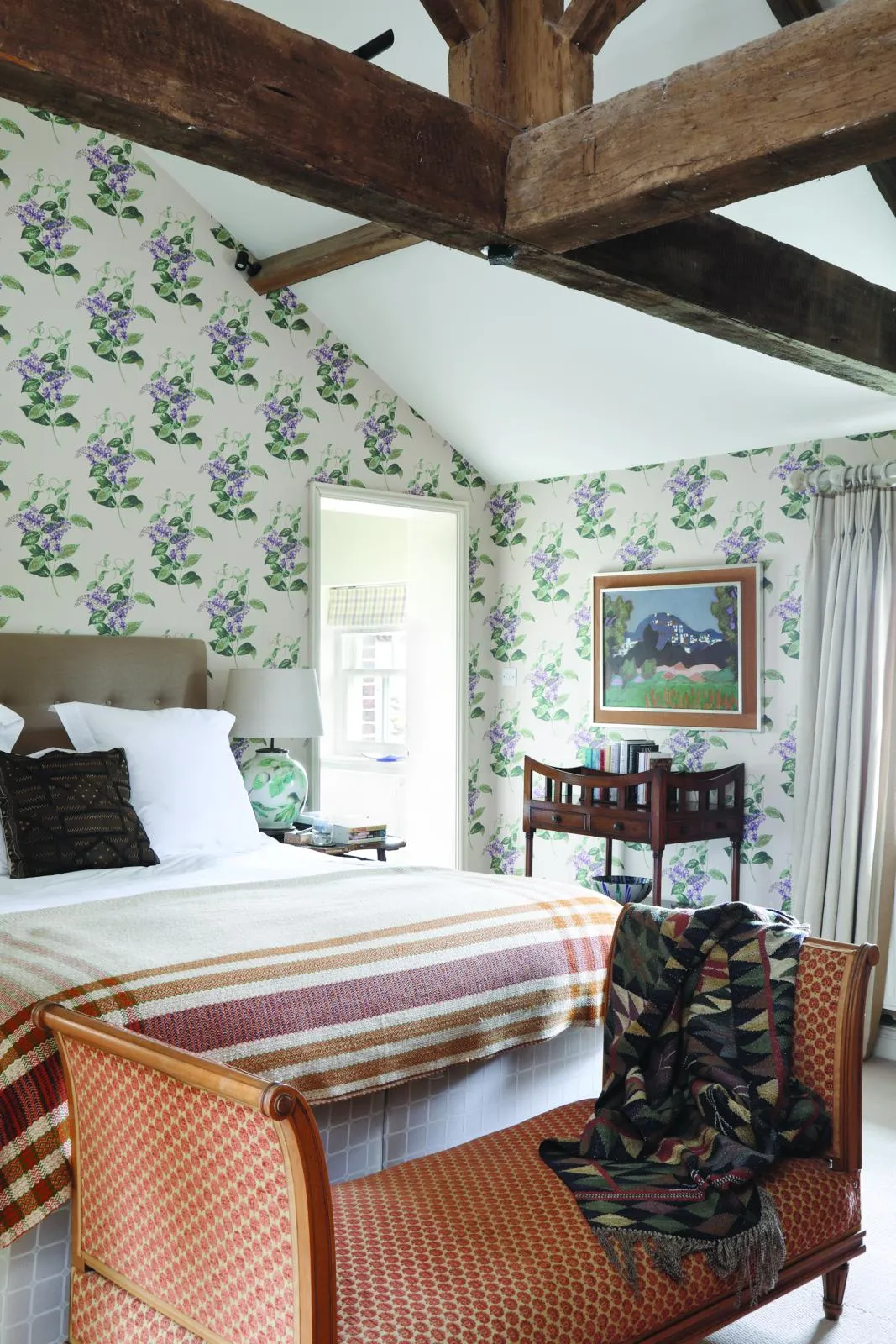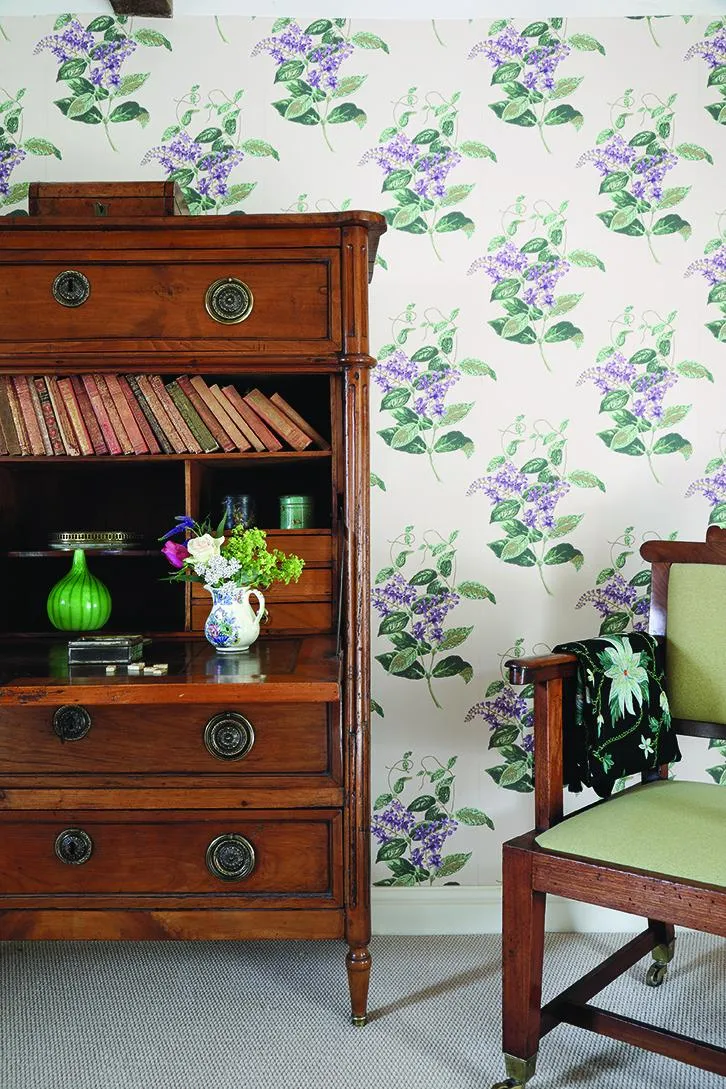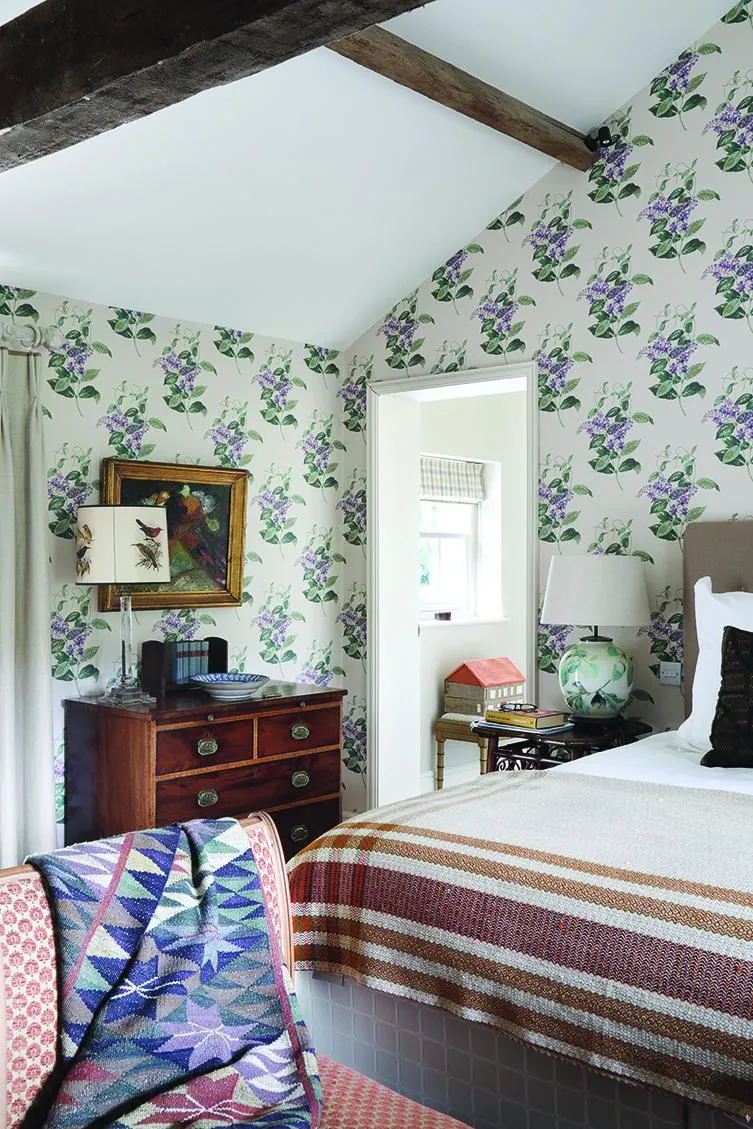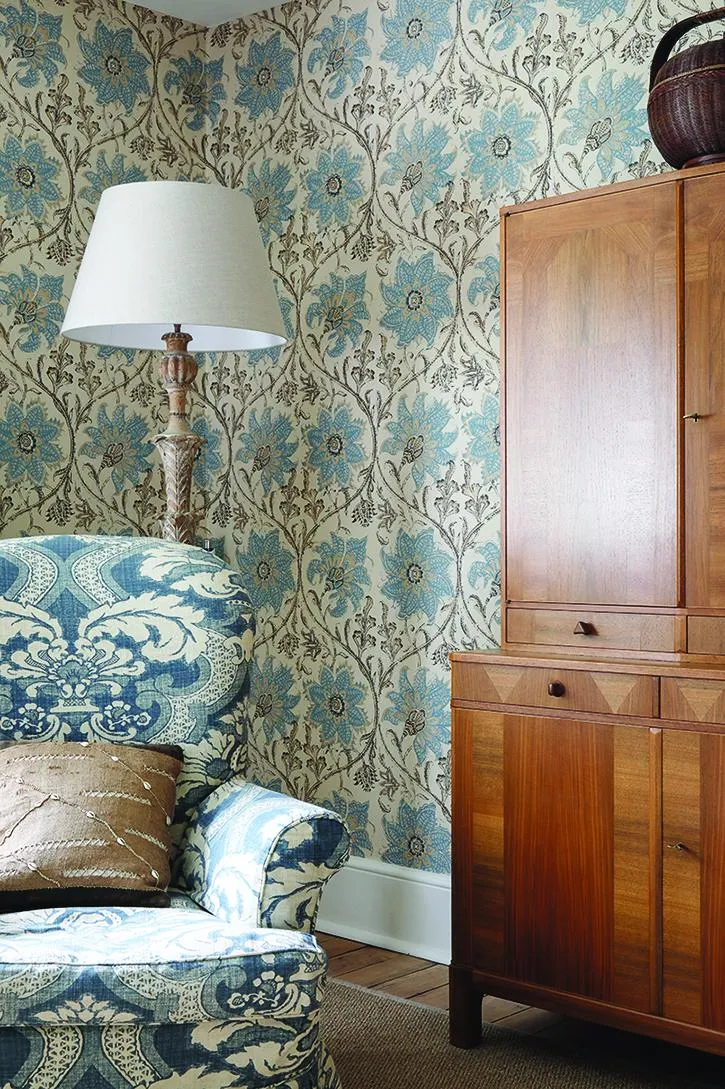When an architect visited Val Foster’s house recently, he made a thorough inspection of the picturesque building framed by expansive Nottinghamshire fields of green and umber. He noted the panelled doors and the gilded lion’s heads set in roundels. He admired the symmetry of the façade with its neat portico and sash windows. Concluding his tour, he decided that it was probably time this ‘fine example’ of Regency architecture was listed.
Appearances are invariably deceptive. What the visitor did not know was that this property is in fact a pastiche of styles and eras. ‘The house was built in three phases. It began as a farmhouse in the 18th century and was doubled in size in the 19th century,’ says Val, whose antiques business, Foster & Gane, is a favourite with private buyers and interior designers, such as Rose Uniacke and Beata Heuman, for its striking, design-led pieces.
‘In the 1960s, the owners bought large parts of a Regency house that was being demolished nearby and used them to create the façade, adding the new hall and staircase inside,’ she continues. ‘After that, there was one interim owner here, a friend of ours, before we bought the house from him in 1997.
We’d been to parties and fallen in love with the house and its setting.’ The quiet surroundings and untrammelled rural views also appealed. ‘We can walk from the garden into an old wood with majestic beech trees as sentinels, which is wonderful.’
The rambling two-storey interior held its own particular magic for Val, a former broadcaster and journalist. Inside, those enterprising previous occupants had used other reclaimed elements – pillars and plasterwork – to add an air of discovery throughout the house. Nothing here is quite what it seems. In the dining room, for instance, what looks like an antique corner cupboard opens to reveal the study, where another door opens on to a walled garden with its fragrant fig tree – like a series of Chinese boxes.
Over the years, Val and her husband, Philip, a retired doctor, have added their own surprises. In 2008, they knocked through the adjacent 18th-century stable block to extend the house: ‘We were able to date the stables according to the particular ‘bond’ used for the distinctively patterned brickwork.’
You might also like a Victorian home with an eclectic mix of styles
The extension houses the orangery, where glazed doors open on to another courtyard garden. Inspired by other secret portals in the house, they used an antique mirror as a gib door, which leads to the library. The couple’s three children grew up here: in the former nursery upstairs an antique wardrobe door opens, Narnia-like, to reveal the family bathroom.
Like the building, the decoration evolved in stages. ‘I’ve always been a fan of John Fowler [the influential decorator and co-founder of Sibyl Colefax and John Fowler] and the way he mixed things to make a place feel lived in, adding layers, so it doesn’t look like a museum. I’m not keen on interiors that look as though they’ve been assembled by numbers – they end up being soulless. I don’t subscribe to a particular look. I buy things I like. That’s what gives a home character.’
For the kitchen, where the original meat hooks still dangle from the ceiling, Val chose simple countrified cabinetry to echo the 18th-century architecture. All the furnishings were picked for design and provenance. One room has a wallpaper by 20th-century artist Peggy Angus, a contemporary of Edward Bawden, who also designed the benches in the garden.
A zingy orange cushion is by Scottish artist Donald Hamilton Fraser. Cole & Son’s romantic Madras Violet lines the master bedroom. ‘I spotted the design in a magazine and longed to buy it. I managed to snap up the last few remaining rolls.’ Downstairs, the loo still has the original 1970s William Morris wallpaper. ‘It looked so right there we’ve never felt the need to change it.’
Val’s career move in to antiques came almost by chance in 2010. ‘I’ve always enjoyed doing up houses and finding unusual bits and pieces. I had set up a website and was selling in a low-key way when I showed my son Ed some of my stock.
He was working in the antiques department at Sibyl Colefax & John Fowler at the time. He suggested I made an appointment with a director to offer him some unusual pieces that I’d found. To my delight, he bought them. It was a real boost. I walked out into Mayfair and thought, maybe I am an antiques dealer.’
You might also like Bridgerton interiors: get the regency look at home
After working for eminent antiques dealers in London, Ed joined the business in 2015. He now runs the showroom, set in a converted coaching inn in Milton Common, Oxfordshire. ‘When I first started I used to buy things that I felt had a commercial edge. Now I only buy what I like,’ says Val of the constantly changing stock. ‘We scour thousands of items every day at auction, looking for interesting things.’
One week it might be Finnish glass, Secessionist lighting or French glass; the next an exquisite Japanese cabinet or Polish abstract. What unifies it all is the unusual design and craftsmanship. Mother and son have also launched their first in-house pieces, which include woven wastepaper baskets and a dining chair made from local timber: ‘It sits well in both a traditional or modern setting,’ she says.
Like her peers, she finds the thrill of the chase just as alluring as the discovery. ‘I love tramping around markets just in case something irresistible turns up.’ In the guest bedroom, the ebonised bedhead was a chance find at a vast fair. ‘It was an 18th-century pew divide from a church but was just the ticket repurposed in a bedroom.’
She also has a knack for uncovering gems by overlooked artists. A striking painting in the orangery is by Joash Woodrow. ‘He trained with Lucian Freud and Frank Auerbach at the Royal College of Art but then became a recluse, painting but refusing to sell his work.
Some years ago, when his family were clearing out his home, an art dealer rescued his very expressive paintings and drawings just before they were about to be thrown in a skip. Just a fraction of them have come on the market over the last couple of decades and his work is much acclaimed.’
In this household, even everyday objects can become works of art. ‘What we also enjoy is finding things that can look interesting when they’re used in different contexts,’ she says. In the orangery, a handsome wooden carving is in fact a door reclaimed from a 19th-century Spanish house. Like everything else here, it has taken on a new, and novel, life of its own.
